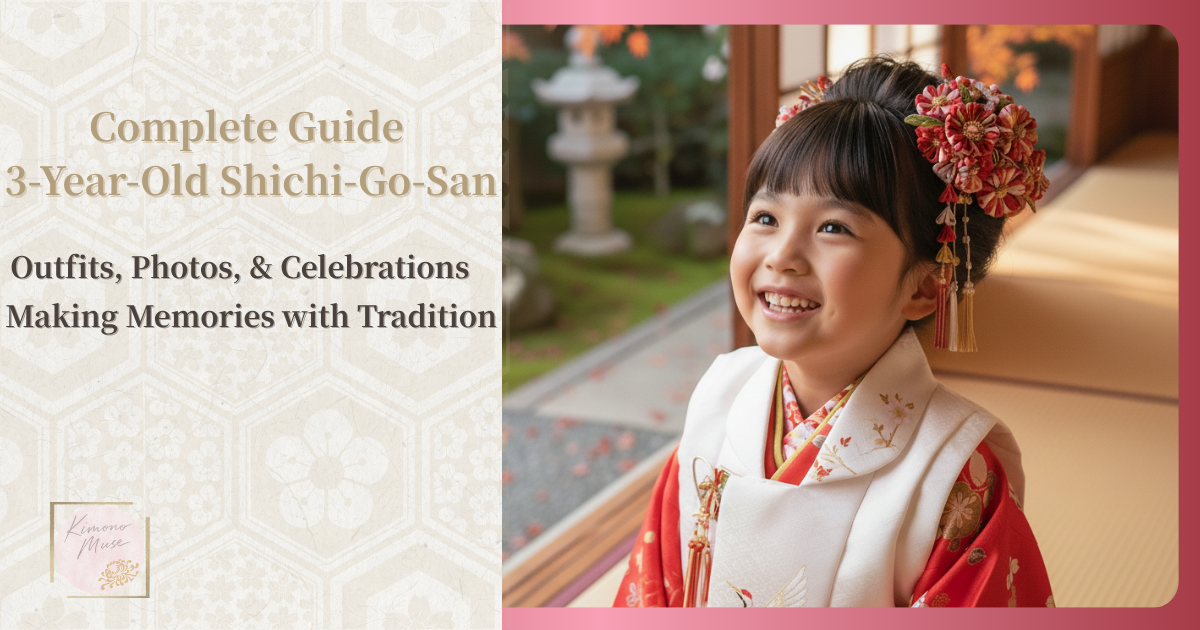The Shichi-Go-San celebration at age three is the first big milestone for both parents and children.
Many parents may feel a little anxious—“Will my child be able to wear a kimono?” “Can they stay cheerful for such a long day?”
But worries like these are all part of making precious family memories through Shichi-Go-San.
In this guide, we’ll walk you through everything from preparing the outfit to the day’s schedule and tips for memorable photos.
Take it easy, and let’s make this a Shichi-Go-San where your child’s natural charm and cuteness shine through.
What Is the Shichi-Go-San Celebration at Age Three?
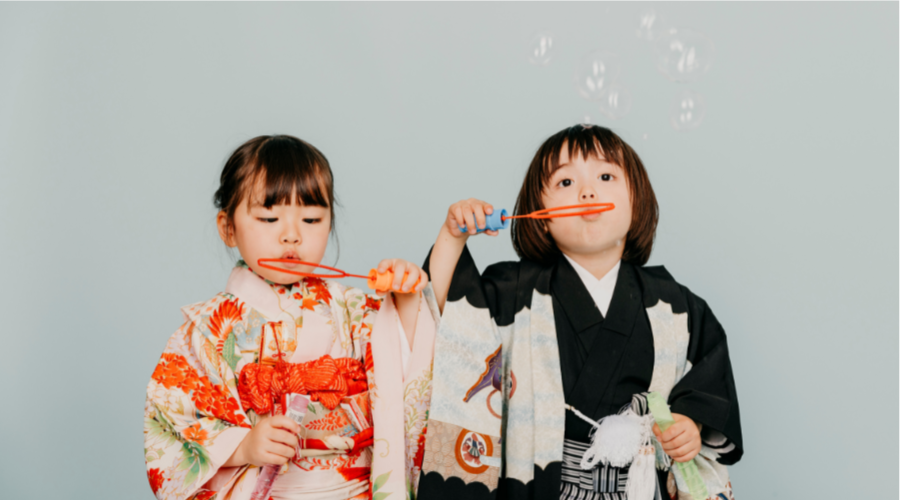
・ Origins and Meaning of Shichi-Go-San
Shichi-Go-San is a traditional celebration that has continued since the Heian period, held to pray for children’s healthy growth.
In the past, it was difficult for young children to survive into adulthood, so families held ceremonies at each stage as prayers for their well-being.
This custom spread through samurai and aristocratic families and eventually became widely known as the Shichi-Go-San celebration we know today.
・Why Celebrate at Age Three?
The celebration at age three originates from the Kamioki-no-gi (Ceremony of Letting the Hair Grow).
In earlier times, infants’ heads were shaved, and at age three families began letting their hair grow, marking a milestone that meant, “Our child has grown strong and healthy so far.”
Today, this meaning lives on, and the age of three is regarded as an especially important first Shichi-Go-San for girls.
The adorable look of a child in a hifu (sleeveless kimono vest) or a pretty dress is unique to this age.
・Why Age Three Is a Special Milestone
Compared with ages seven and five, three-year-olds are still very young.
For parents, this is also the moment they truly feel their child growing from a baby into a little boy or girl.
Whether dressed up formally or simply smiling or crying, everything about their child on this day becomes a priceless memory.
・When and Where to Celebrate
Traditionally, Shichi-Go-San is held on November 15, but many families now celebrate on a convenient day in October or November.
To avoid crowds, choosing a weekday or an earlier date in October is a good idea.
For the shrine visit, it is best to choose a place that has ties to your family, such as your local guardian shrine (ujigami) or a historically significant shrine or temple.
If you plan to request a blessing ceremony, check in advance about reservations and the customary offering (hatsuhoryō), which usually ranges from 5,000 to 10,000 yen.
Preparation: Key Points You Don’t Want to Miss
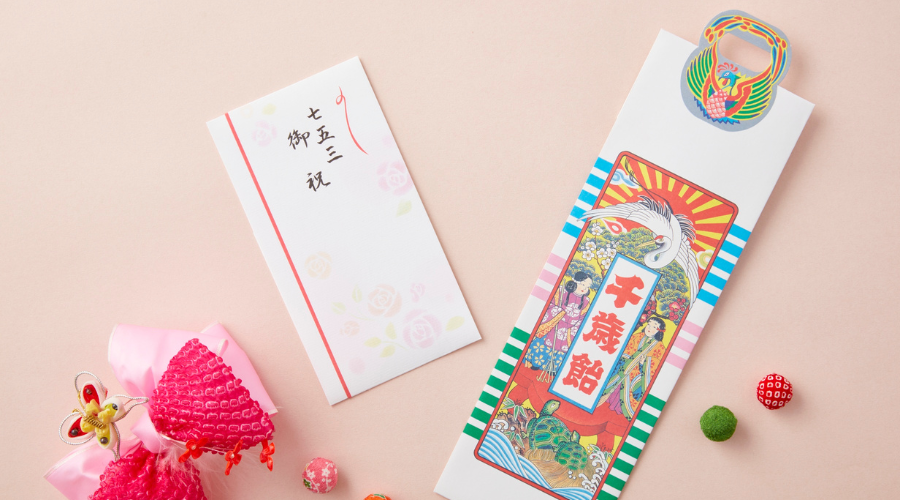
To enjoy Shichi-Go-San with peace of mind, preparation is key—choosing the right outfit, planning the photoshoot, and confirming the shrine you’ll visit.
Here, we’ve gathered the important points specific to age three to help your family spend the day smoothly and without stress. Use these tips to make the celebration a joyful memory for everyone.
Choosing the Right Outfit
・Kimono Style for Girls (Hifu and Kimono)
For three-year-old girls, the standard style is a small kimono called mitsumi (a kimono tailored for young children), paired with a hifu—a sleeveless padded vest worn instead of an obi (sash).
Because there is no tight obi, the outfit feels comfortable and easy to move in, making it a safe choice for a child’s very first kimono.
The rounded silhouette of the hifu highlights a child’s innocence and expresses the unique charm of being three years old.
However, zōri sandals can be difficult to walk in, so many families let their child wear sneakers or shoes while moving around and switch to zōri only for the photo session.
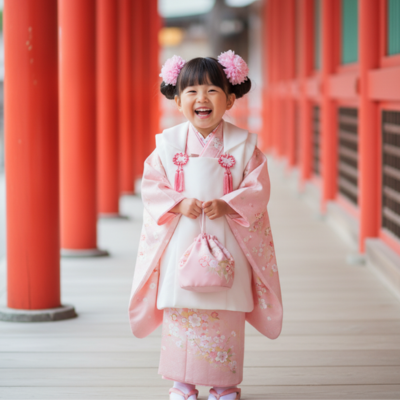
・Kimono Style for Boys (Haori and Hakama)
For three-year-old boys, wearing a kimono is the most popular choice for Shichi-Go-San.
Traditionally, the haori and hakama style originates from the “Hakamagi-no-gi” (Ceremony of Wearing Hakama) celebrated at age five, so there’s no need to insist on hakama at age three.
At this still tender age, a sleeveless vest called hifu also suits boys well and is convenient because it’s easy to put on and take off.
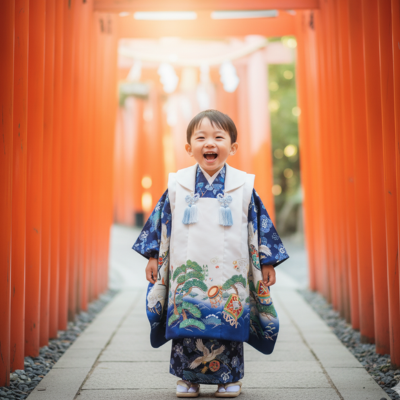
・Western-Style Outfits (Dresses and Suits)
More families are now choosing dresses or suits in addition to traditional kimono.
Since children are used to wearing these outfits, they feel more comfortable, and the styles also look great in photos.
Fluffy dresses are especially popular for girls, while little tuxedos and suits are favored for boys.
Some families choose kimono for the shrine visit and switch to Western-style outfits just for the photo session—a lovely combination.
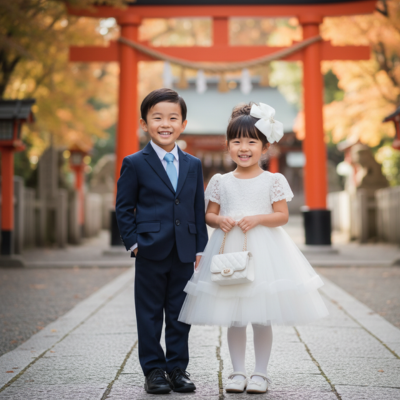
・Accessories and Little Touches
For girls, accessories like hair ornaments and small bags add a festive touch. For boys, items such as a tiny folding fan or a kaiken (a decorative short sword) enhance the sense of occasion.
Choosing accessories that match your child’s preferences will help them enjoy the day with even more excitement.
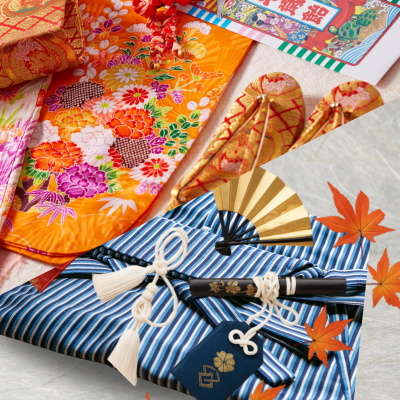
Planning the Photo Session
Another highlight of Shichi-Go-San is the commemorative photos.
Since it’s such a special day, you’ll want to capture your child’s smiles and keep them as lasting memories.
・Studio Photography
With professional photographers and staff on hand, you can feel at ease, and outfits and accessories are also readily available.
Because the lighting and backgrounds are well prepared, this option is ideal for families who want formal, polished commemorative photos.
・Location Photography
This style makes use of natural light at shrines, gardens, or other outdoor settings.
Children can enjoy being outside, which helps bring out natural smiles.
Seasonal scenery, such as autumn leaves or ginkgo trees, also adds to the charm.
・On-Location Home Photography
In this style, a photographer accompanies your family from home.
It allows for capturing casual moments during preparation or travel, creating a record that feels closer to everyday life.
Since children can relax in familiar surroundings, this option ishighly recommended.
No matter which style you choose, reservations fill up quickly during the autumn Shichi-Go-San season.
For a smoother experience, plan the photo session around your child’s condition—such as in the morning or before nap time—when they’re usually in better spirits.
Choosing and Booking the Shrine Visit
Choose the shrine or temple for your visit based on your family’s connection to the place and how easy it is to access.
Some families choose their local guardian shrine (ujigami-sama), while others prefer a well-known shrine.
If you plan to request a blessing ceremony, note that advance reservations may be required.
Popular shrines can become fully booked months ahead, so it’s best to check early.
Also, make sure to confirm whether the site is family-friendly—for example, if there is parking available, or nursing and rest areas for children.
Coordinating with Grandparents
If grandparents will be joining, be sure to share the schedule with them well in advance.
Since the day may involve travel and waiting time, plan with consideration for their health and comfort.
If you’re arranging a family meal after the shrine visit, it’s a good idea to book a private room or choose a restaurant that offers children’s menus.
By making the day enjoyable for the children, the entire family can relax and share in the celebration together.
The Day’s Schedule and Tips
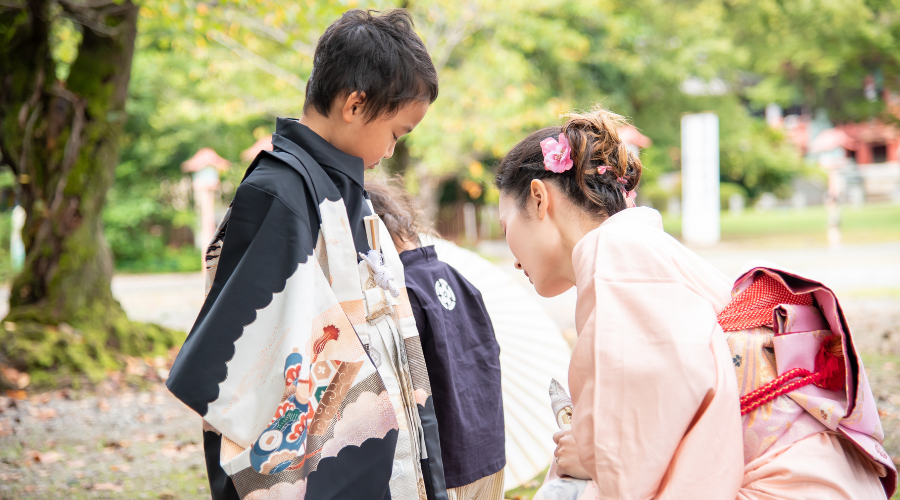
・Getting Ready at Home
On the morning of Shichi-Go-San, putting on an unfamiliar kimono or sitting through hair and makeup can feel like an exciting but slightly overwhelming event for a three-year-old.
They may feel unsettled by the unusual atmosphere or get restless during the process.
To help your child stay cheerful and welcome the day with their best smile, try to prepare in a way that suits your family’s routine and avoids unnecessary stress.
・Try to create a schedule with some breathing room
Getting dressed and doing hair and makeup can take longer than you’d expect. Since 3-year-olds often have a short attention span, it’s a good idea to build a little extra time into your schedule. If you can create an environment where you can prepare at your child’s pace without rushing, it might also help you, as a parent, feel more at ease.
・Consider some ways to keep your child from getting bored
It’s a good idea to have some tricks ready to make the preparation process enjoyable.
・Have their favorite snacks and drinks ready
A short break can help lift their spirits.
・Using a favorite toy or a video can be helpful, too
Having a special “go-to” tool to help your child stay focused can be a lifesaver in a pinch. However, you’ll need to be careful not to get the kimono or makeup dirty.
・Try using positive words to build excitement
Saying things like, “You look like a princess!” or “You’re so cute!” can help them get excited about the celebration.
・If possible, finish any preparations the day before
To focus on getting dressed and doing hair and makeup on the morning of the event, it’s a good idea to have everything else ready beforehand, such as preparing what you need to bring and checking the kimono.
This will help you, as a parent, prepare mentally and have a smoother morning.
Prioritizing your child’s pace and gently encouraging them without rushing will be the most important tip for making it through the morning with a smile.
・Visiting the Shrine & Prayer
When you arrive at the shrine, you might want to start by preparing to greet the gods.
・Review the Proper Etiquette at the Temizuya
Most shrines have a temizuya (water basin) for purifying yourself before visiting the main shrine. This might be your child’s first time, so it can be a great experience to teach them the simple steps of washing their hands and rinsing their mouth together. It’s an important step to greeting the gods with a pure heart.
・Consider a Small Bow When Passing Through the Torii
The torii, or shrine gate, marks the boundary between the everyday world and the sacred space. It is considered good etiquette to show respect to the gods by bowing lightly when passing through it. Having your child imitate you can also be a special memory for them.
・Check the Registration and Flow of the Gokito (Prayer Ceremony) in Advance
Afterward, you’ll often register for the gokito at the shrine office. Checking the standard hatsuho-ryo (ceremonial offering) and how to apply (whether it’s same-day registration or a reservation) beforehand will ensure a smoother day.
The gokito is a precious time when a Shinto priest prays for your child’s healthy growth. It typically takes about 15 to 30 minutes, but the flow and waiting time can vary by shrine. Considering your child’s attention span, it might be a good idea to check the shrine’s website or even call ahead for information. This will help you feel more at ease during your visit.
With your child, please enjoy a special time where you can experience traditional Japanese etiquette and pray for their healthy growth.
・3-Year-Old Shichi-Go-San Photoshoot
It’s your child’s important 3-year-old Shichi-Go-San, and you want to capture their adorable look in the best possible photos. For a commemorative photoshoot, there are two main timings and three distinct photography styles.
・Timing of the Photo Shoot
Same-day shoot with the shrine visit
- Advantages: Only one trip is needed, and everything can be completed in a short period.
- Considerations: For 3-year-olds, it can be physically demanding. They may become tired and smile less.
Photo shoot on a separate day
- Advantages: There is more flexibility, and photos can be taken when your child is in a good mood. You can also spend more time on various poses and settings.
- Considerations: Scheduling is required twice, which may take more effort.
・Style of the Photo Shoot
Studio photography
- Features: Professional lighting and sets allow for polished, high-quality photos. Weather is not a concern.
- Recommended for: Families who want formal, well-arranged portraits.
Location photography
- Features: Natural expressions can be captured in places like parks or gardens. Seasonal atmosphere can be reflected.
- Recommended for: Families who want lively, natural photos in an open setting.
On-site photography
- Features: Photos can be taken at the shrine, capturing the prayer ritual and natural family moments.
- Recommended for: Families who want to preserve real memories from the day of the shrine visit.
・Celebratory Meal for a 3-Year-Old’s Shichi-Go-San
After the shrine visit and photo session, some families choose to celebrate with a meal together.
It’s not a requirement, but since it’s a rare opportunity for the family to gather, you may want to plan one if it suits your wishes.
There are generally two main styles of celebratory meals.
・Celebration at Home
- Features: Your child can stay relaxed in a familiar environment. The schedule can be adjusted freely.
- Recommended for: Families with younger siblings, or those who prefer a casual and relaxed atmosphere.
・Celebration at a Restaurant or Traditional Venue
- Features: Enjoy a festive atmosphere and a sense of special occasion. You can also appreciate the food and service.
- Recommended for: Families who wish to invite grandparents and hold a more formal celebration.
Whichever you choose, the key point is whether your child can enjoy themselves until the end.
Select a style that feels comfortable for your family and bring the Shichi-Go-San celebration to a warm conclusion.
Frequently Asked Questions (Q&A): Your Handy Guide to Shichi-Go-San Concerns
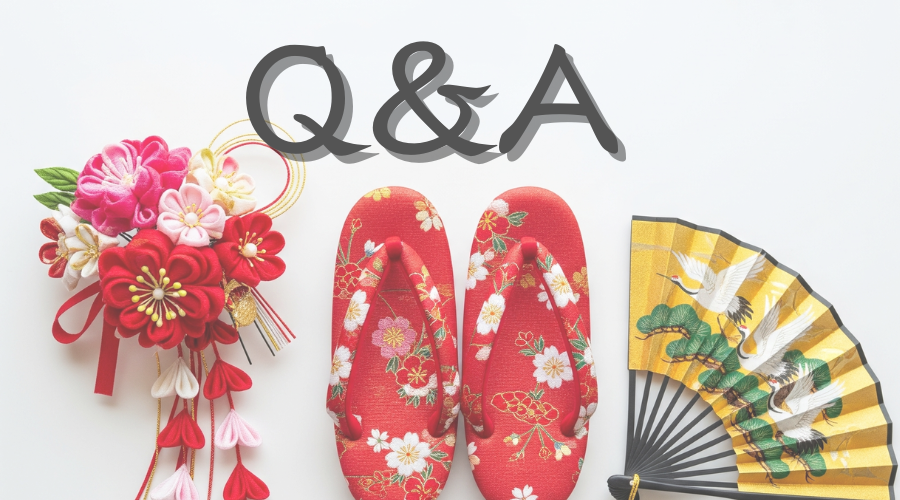
We’ve gathered some of the most common questions about celebrating Shichi-Go-San with a 3-year-old.
Please use these answers as helpful tips to plan a Shichi-Go-San that best suits your family.
**Q1. What should siblings wear for Shichi-Go-San?**
A: If there are siblings, parents sometimes wonder how to coordinate their outfits with the main child being celebrated.
Formal Western-style clothing is perfectly fine. For boys, a suit or jacket works well; for girls, a dress is recommended. This creates an elegant and harmonious impression when standing next to the child in kimono.
Coordinating with kimono is also wonderful. If possible, having siblings wear traditional attire gives the whole family photo a unified look and makes it even more festive.
However, there’s no need to force everyone into matching outfits. The most important thing is that all siblings feel comfortable. Choose clothing that highlights the child being celebrated while allowing each sibling to move freely and enjoy the day.
**Q2. What are the manners for giving or returning Shichi-Go-San gifts?**
A: It’s natural to wonder about the etiquette when receiving celebratory gifts for Shichi-Go-San.
- If grandparents give a gift:
- Invite them to a meal: The best return gift is letting them see the child’s special day and celebrating together. Hosting a meal and expressing gratitude is the most common practice.
- Give commemorative photos: A professional Shichi-Go-San portrait in an album or photo frame will be cherished as a keepsake.
- Consider preparing a return gift (uchi-iwai):
Depending on the amount received, some families prepare a return gift as a token of thanks. Personalized items with the child’s name or sweets are popular choices. It’s customary to send this within about a month of receiving the gift.
**Q3. What if it rains on the day of Shichi-Go-San?**
A: Rainy weather can be worrisome, but with a few adjustments, the day can still be wonderful.
- Switch to Western-style clothing if needed: Kimono can be difficult to manage in heavy rain, and the ground may be slippery. Consider dressing your child in Western clothes for travel or even for the shrine visit itself.
- Focus on studio photography: Even if you planned outdoor photos, a studio session won’t be affected by the weather. You can take plenty of pictures indoors and keep the shrine visit brief.
- Make use of covered areas at the shrine: Many shrines have roofed corridors or spaces. Use them for photos or to shelter between prayers. Bringing extra umbrellas and towels will give peace of mind.
**Q4. What if my child refuses to wear a kimono?**
A: It’s quite common for children to feel uncomfortable or resist wearing kimono since they’re not used to it. In such cases, flexibility is key.
- Let go of the idea of perfection: Shichi-Go-San is a precious celebration of growth, but aiming for “everything perfect” can exhaust both parent and child. Prioritize your child’s happiness and smiles.
- Combine Western and traditional clothing:
- For the shrine visit, choose comfortable Western clothes, and change into kimono only for the photo session.
- Some studios offer packages where children can wear both kimono and Western outfits. Taking kimono photos early, before the child gets restless, is also effective.
The most important thing is celebrating in a way that suits your child. The best memories come when the child feels, “That was fun!” Even if they don’t wear kimono the whole time, what truly matters is gathering as a family to celebrate their healthy growth. With that spirit, Shichi-Go-San will surely be a wonderful occasion.
Conclusion
The 3-year-old Shichi-Go-San is a traditional Japanese celebration that honors a child’s growth and marks an important milestone for the family.
It is customary for children to wear kimono, visit a shrine for blessings, and create memories through photos or a family meal. While there are many preparations, what truly matters is sharing the joy of the day together as a family.
Shichi-Go-San remains a cherished tradition among many families in Japan today, and it is also an important custom for understanding Japanese culture.
Related Articles
▶ Complete Guide to Shichi-Go-San at Age 5
▶ Complete Guide to Shichi-Go-San at Age 7
✿Column: Fumi’s Kimono Diary ✿
As the season changed, I brought out my child’s kimono.
The sleeves that were far too long last year now fit just right, and I’m amazed at how quickly children grow.
When I opened the family album, I came across my own Shichi-Go-San photos.
There I was, a little child holding a chitose-ame candy stick with a slightly nervous face. The sight made me smile.
Shichi-Go-San, I realized, is not only about the festive day itself. The preparations beforehand and the reflections afterward are also part of what makes it such a meaningful milestone for the whole family.
